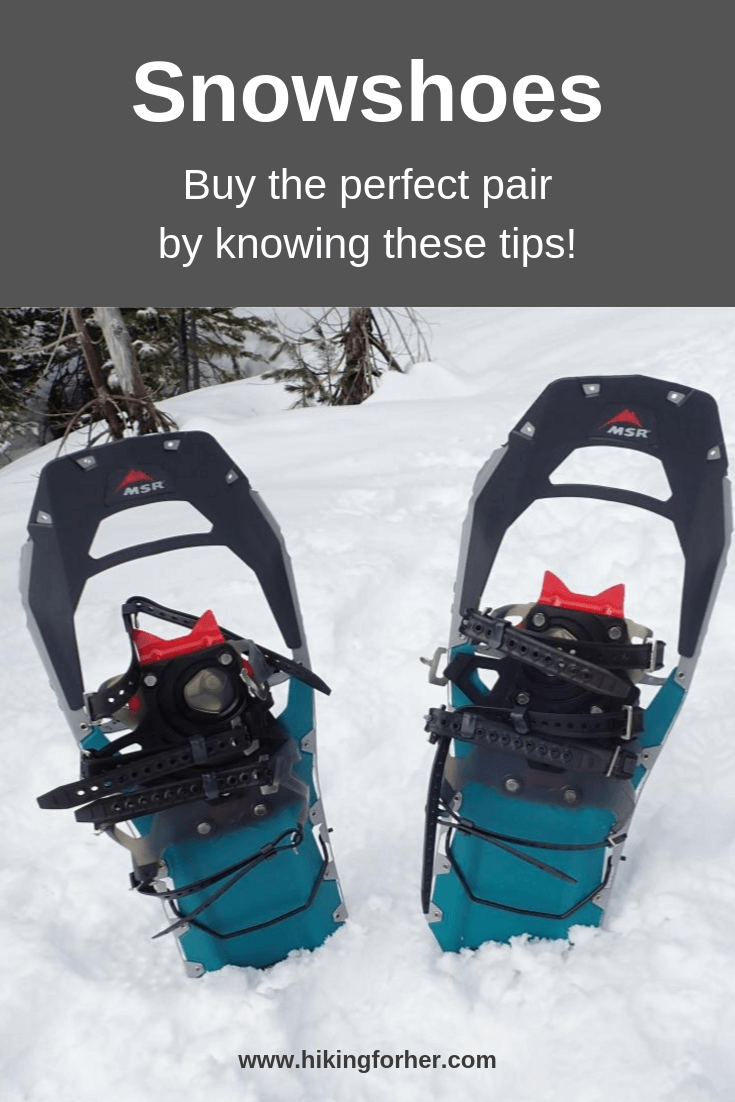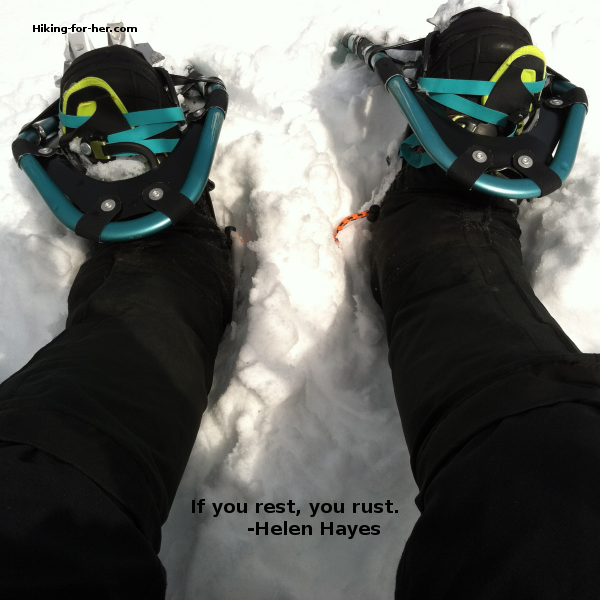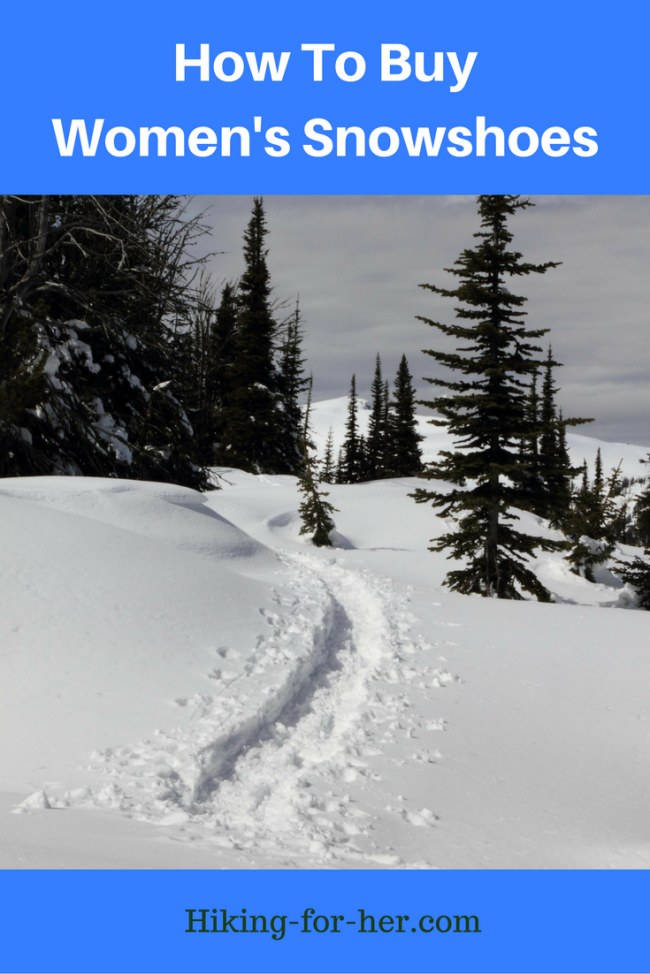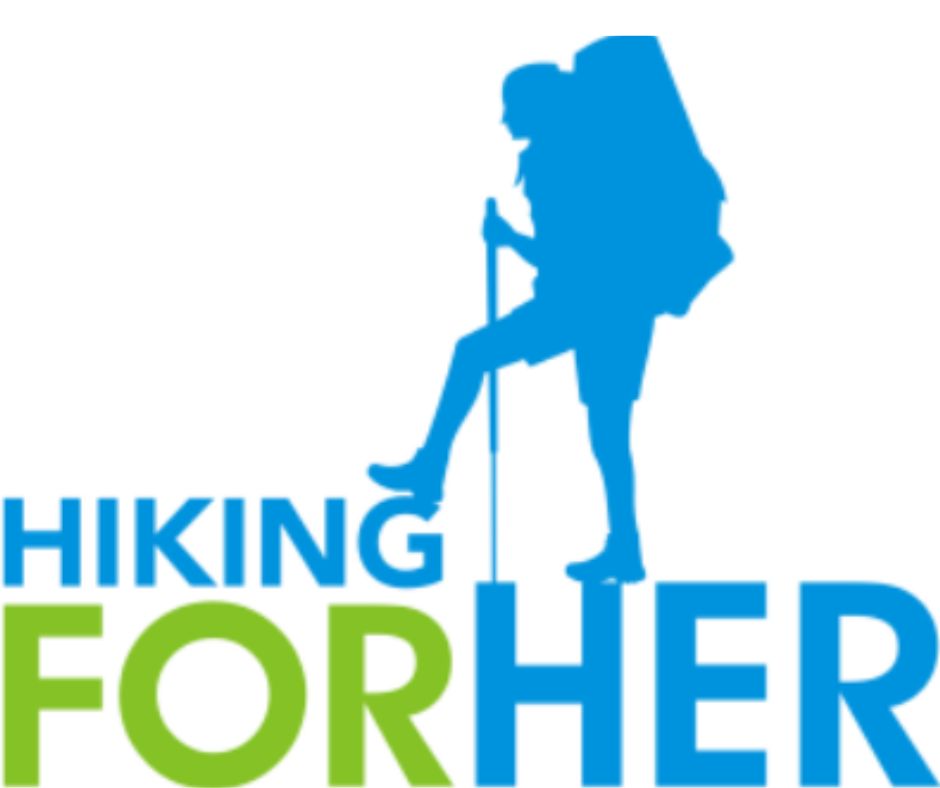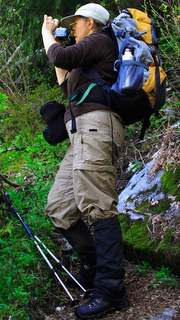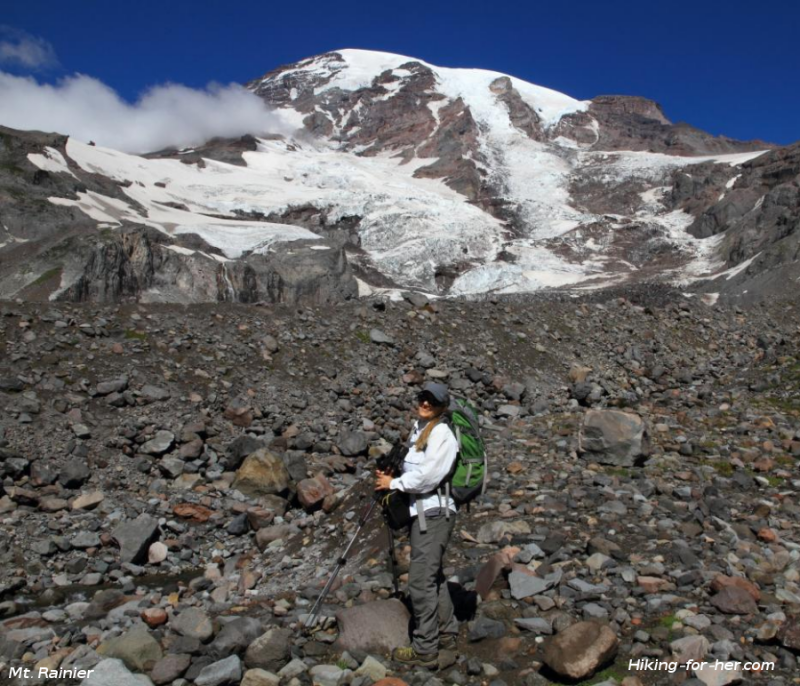Enjoy Happy Trails, the free monthly newsletter from Hiking For Her
Receive a free resource: "Hiking Layering System Explained"
Best Women's Snowshoes:
How To Buy
The Right Pair For You
By Diane Spicer
Women know how to buy shoes, that's a fact.
But what about how to buy snowshoes for women?
You need the best possible strategy when shopping for this type of winter hiking gear.
These shoes are made for accessing cold, snowy terrain, not for accentuating your legs.
- But think about what great muscle tone you're building when you're wearing them!
So throw away all of the things you think you know about how to make a good decision (your shoe size and foot width, for instance) when you size up a pair of snowshoes for the first time.
Instead...
Check out these topics before you go shopping.
Consider these questions
before you go snowshoe shopping
If you answer a few questions before you go shopping for a pair of snowshoes, it will save you a ton of money and the hassle of making returns.
Your answers are important for selecting the correct snowshoes for your winter adventures!
What kind of snow do you expect?
Snowshoes are designed to keep you on top of the snow as much as possible.
If the snow is wet and heavy, you don't need long tails for additional flotation.
And the shorter the snowshoe, the better.
If the snow is dry and powdery (lucky you!), you might need the flotation tails to stay above it.
How heavy are you,
and do you carry a pack?
Always add in your full pack weight when reading the tag attached to the shoes:
- body weight
- fully loaded backpack
- hobby items such as camera, tripod, geology hammer, you get the idea
What do the numbers mean for you?
You'll see numbers referring to the length of the snow shoe.
- For instance, "21" means 21 inches from one end to the other.
Smaller numbers will support less weight above the snow.
You don't want to be sinking in with every step, because it's exhausting.
- On the other hand, you don't want big boats (27 or higher) on your feet unless you're carrying a big load.
And don't worry!
The tag doesn't nail you on your exact weight. It's divided into wide ranges so that you'll have no trouble picking the right one for you.
What kind of terrain are you going to tackle?
Some gear manufacturers make a series of snowshoes, targeting different usage possibilities, ranging from flat to rolling terrain to steep mountainous areas.
Keep that in mind as you consider the following important features.
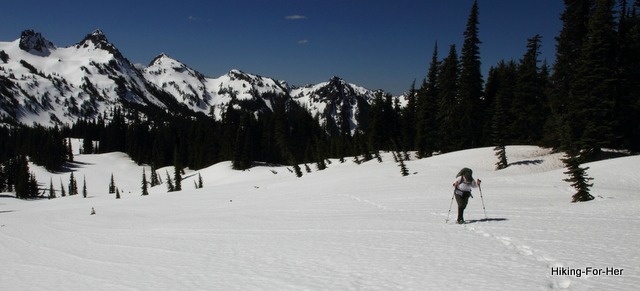
Feature #1 for great snowshoes:
bindings
You want to easily attach these specialized shoes to your boots, without exposing your hands to snow and ice to fiddle with zippers or buckles.
Then you want these marvelous contraptions to stay on your boots as you travel over hill and dale.
And you definitely want them to release quickly from your boots when you're ready, without having to alligator wrestle them off your feet.
How to decide what to buy
I'm not a technical designer of bindings (still waiting for that particular phone call), but I have many, many winters of experience fiddling with them under all sorts of wintry conditions.
So here's my advice on how to go about deciding what to purchase.
Buy your winter boots first.
- Use my tips to get a great pair.
Then, go to a physical location selling winter gear, bringing along your winter boots.
I know it's convenient to order online, but do it after you actually handle multiple pairs of snowshoes.
Strap one boot into one shoe - neither of them are on your foot yet. You want to examine:
- the contact areas
- how the bindings are designed to allow the entry and release of the boot
- how much swivel room there is
- how many straps you need to touch, pull on, pull up on, or release in order to get the boot into proper alignment
The fewer hand and finger movement required to get the boot and snowshoe to play nicely together, the better.
- You don't want to take off your gloves each and every time - that's tedious, and potentially dangerous in cold or wet conditions.
Once the boot is firmly seated in the binding, hold the whole set-up in one hand and play with the boot - bend it through all of its positions, watching what happens to the bottom of the snowshoe as well as the binding itself.
This will give you an idea of how much work it will be to get a good toehold on icy slopes, to "tiptoe" across frozen streams with protruding rocks, and to hold your balance while sidestepping over an obstacle.
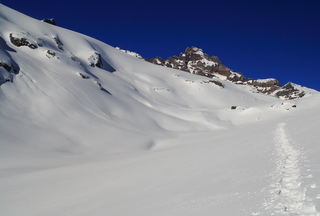 Snowshoe tracks on pristine snow, Mazama Ridge, Mt. Rainier, Washington State, USA
Snowshoe tracks on pristine snow, Mazama Ridge, Mt. Rainier, Washington State, USA
Are we there yet?
Not quite.
Now it's time to actually put on your boots and strap yourself in.
Don't let a helpful sales person do this for you, YOU do it (although they can throw in a few helpful words if you need it).
Here's your learning curve: If you build up a sweat putting on and taking off the snowshoes in the comfort of a store, they're probably not right for you.
And beware of under-built equipment.
A quick step-in flimsy binding is great for beginners, but you will quickly outgrow them if you go on more than just a few outings.
I've used Tubbs, MSR, and Atlas brands, and if you'd like to hear my experiences with them, shoot me an email using the box at the bottom of this page.
- I can also answer your questions about bindings in general. Contact me!
I'm not being paid for my opinions, I'm just interested in getting women out into the great wintery playground!
Snowshoe feature #2:
rock solid grip
Snowshoe decking is built to distribute your weight across the snow so you won't sink.
More importantly, the cleats and crampons give you a good grip on whatever you're walking across, up, or down.
Inspect each pair you're considering for the amount of surface area devoted to cleats.
- If
you are going for flat walks in open terrain, you don't need lots of
gripping surface.
- If you get out on slopes, you want to be prepared for any angle of inclination, icy spots, and potential hidden hazards such as buried rocks or debris.
Losing your balance could trap you in a tree well, send you into a long and dangerous slide, or could give you a face full of coldness that lowers your body temperature.
Yikes!
So make peace with the fact that you need to spend lots of time comparing the undersides.
Don't be lured or dazzled by the colors of the decking, the logos, or any hyped features - just concentrate on visualizing yourself on an unexpected icy patch of slope and needing to maintain your grip.
You want the proper number of aggressive looking cleats - just a few, or lots of metal teeth! - to match the conditions you'll be in.
Feature #3:
women's snowshoe design
As a veteran of men's ill fitting hiking equipment for decades, I was thrilled when snowshoeing became popular again because it forced manufacturers to pay attention to a woman's stride.
And smaller boots.
Back in the old days (pre-1990's or so), there was no such thing as gender-specific shoes.
But today, don't believe it when you hear that anyone can wear any pair.
Technically, that is true - they are designed to accept anyone's boots.
But WALKING IN THEM mile after mile is a different story!
Women's hips are angled differently than a man's, which is Nature's smart design for child bearing.
Put on a pair of men's snowshoes and walk 3 miles, then walk back in women's, and your hip muscles will know the difference.
And they won't be shy about telling you, either.
What to look for in women's snowshoes
Look for tapered designs, and if you are on the petite or short side, shorter ones (recall numbers indicating length).
You don't want to force your legs to walk any further apart than they have to, or your hips and knees will be sore the next day.
One last little thing to watch for: heel lifts.
- If you're going to do any amount of uphill work, you want these on your snowshoes.
- They pop up and support your boot heel, allowing your gastrocnemius (calf) muscles to do a better job of gaining ground.
Where to get
your snowshoe gear
There's really no good way to give you solid advice without being right there with you when you try on the equipment, or better yet while you're using it on a winter outing.
Instead, I recommend that you borrow or rent different brands before making a final selection. You won't get a feel for them just by trying them on in a store, so don't deprive yourself of the fun of experimenting.
Local sports stores may offer low priced rentals - a great way to get your friends, kids and spouse hooked on snowshoeing, too.
Discount gear stores always run "end of season" and pre-season sales, so bookmark a few of these stores and keep your eyes open.
Another option: sports clubs may have gear swaps or used equipment for sale.
And ask around: friends of a friend may have what you need.
If you're an REI member, go there for expert recommendations and a wide selection of women's snowshoes.
- Not a member yet? Please don't wait any longer, for these great reasons.
What I wear and recommend
for snowshoeing
The gear I use can serve as an example of what to look for:
-
Here is a review of the MSR snowshoes on my feet.
- And the boots I depend on for warm feet: Baffins.
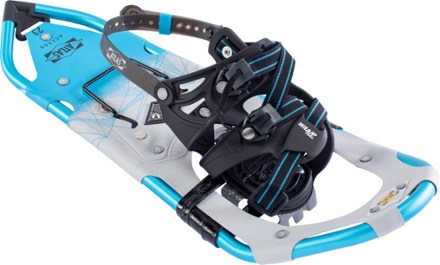 Atlas Access Snowshoes Atlas Access Snowshoes
|
I also like my trusted pair of women's Atlas Access 23 Snowshoes, for their simple bindings and lightweight feel ... ... as you can see from the photo with the Helen Hayes quote above! |
Important snowshoeing or winter hiking tip
Gaiters are also a great idea to keep snow out of your boots and off your pants legs (warmer, drier, more comfortable).
- The pair I depend on are these women's gaiters.
For lots more snowshoeing gear tips, read this.
There is a fascinating history
to this sport
Did you realize that this simple but elegant technology has a long history of getting humans into the backcountry during winter?
Yet the evolution away from wood into light weight and durable aluminum frames is relatively recent, making this sport even easier to learn.
Walking on top of the snow under your own power, peaceful and quiet, is a fantastic way to spend a winter day.
Snowshoes and solitude, that'll be the tune you're singing.
Try it soon!
And be safe in your winter playground.
Thanks for reading up on how to buy the best pair of snowshoes! Smart, safe and happy hikers, that's the Hiking for Her approach :)
Home page > Snowshoeing >
How To Buy The Best Snowshoes

